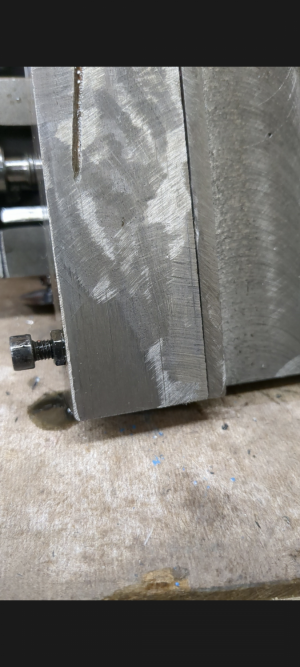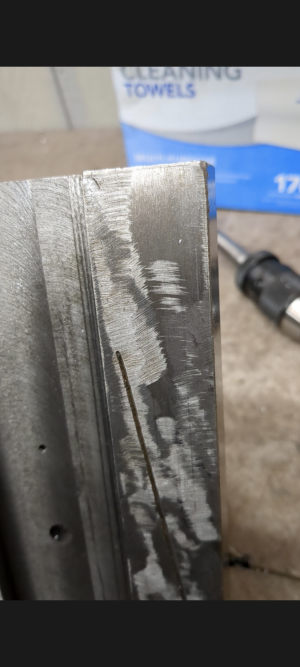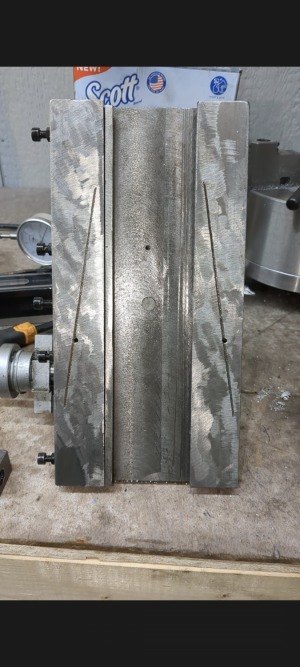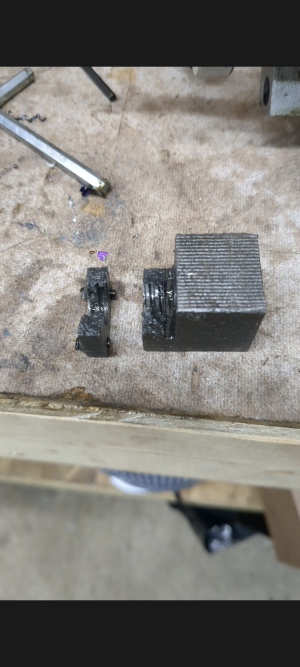Ive had my pm-1030v for about 2 months now, maybe 5 hours of run time on it, oiled regularly and kept clean, but recently i noticed the cross slide had a little bit of slop in it that was getting progressively worse over the last week, chattering no matter what. Since day 1 i could not accurately or repeatably set the cut depth, but I figured it was probably just from my lack of experience. Now after the cross slide started developing play in it i thought maybe the 2 problems are related, and took it off to clean/inspect it and found a broken lead screw nut. OK, no big deal thats and easy fix. But then i flipped over the cross slide and saw this (see pics). It looks like it was finished with an angle grinder and abrasive disc....the surface is very rough, with a straight edge on it i can slip a .025" feeler gauge under it in a couple spots, and it is only making contact on 2 corners.
My questions:
Is this normal?? I thought these were (ideally) scraped, or at the very least ground fairly flat. The opposing surface is very flat. My only other experience with a lathe is a cheap mini lathe, which looks a lot better than this.
Is this repairable? Im afraid if i scrape it, i would need to remove so much material that it would be making contact with the top of the dovetail before i get it flat. Which leads to the next question.
Am i correct that the top of the dovetail base and bottom of the saddle should not make contact? I thought the bearing surfaces are - the angles of the dovetail, and the 2 lower flats, given the shallow cut in them for oil, but ive been wrong before.
Im mostly just curious what some people that are more familiar with these has to say.
Thanks in advance.
My questions:
Is this normal?? I thought these were (ideally) scraped, or at the very least ground fairly flat. The opposing surface is very flat. My only other experience with a lathe is a cheap mini lathe, which looks a lot better than this.
Is this repairable? Im afraid if i scrape it, i would need to remove so much material that it would be making contact with the top of the dovetail before i get it flat. Which leads to the next question.
Am i correct that the top of the dovetail base and bottom of the saddle should not make contact? I thought the bearing surfaces are - the angles of the dovetail, and the 2 lower flats, given the shallow cut in them for oil, but ive been wrong before.
Im mostly just curious what some people that are more familiar with these has to say.
Thanks in advance.
Attachments
Last edited:





